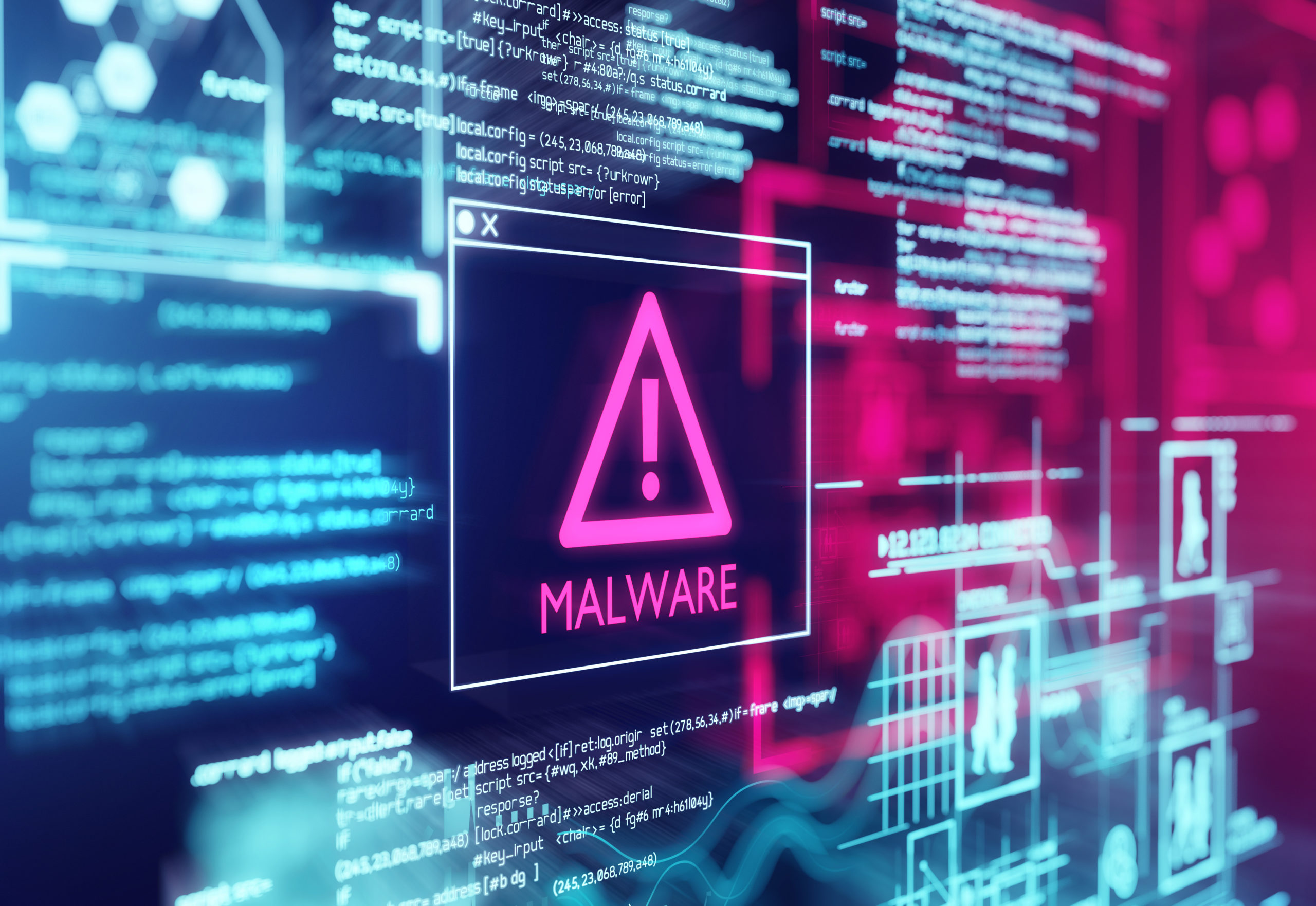
Exploring the Dark Side of Cyberspace: A Guide to Different Types of Malware
There is a dark underbelly to cyberspace that can wreak havoc on businesses: malware. Most of us have heard of it, but did you know just how many types of malware exist as a constant threat to websites, data integrity and system stability?
Here we detail 14 types of malwares to prepare for and mitigate against, with more emerging all the time:
Viruses
Among the most well-known types of malwares, viruses infect host systems by attaching themselves to legitimate programmes or files. Once activated, viruses replicate and spread, often causing damage to files, software and even hardware components. Their ability to self-replicate makes viruses particularly dangerous, as they can quickly proliferate across networks, leaving a trail of destruction in their wake.Worms
Worms are standalone malware entities capable of spreading across networks without the need for a host programme. Unlike viruses, worms do not require user intervention to propagate, making them highly efficient at infecting large numbers of systems rapidly. Worms exploit vulnerabilities in network protocols to infiltrate and compromise systems, often leading to widespread disruption and data theft.Trojans
Named after the infamous Trojan Horse of Greek mythology, Trojans disguise themselves as legitimate software to trick users into executing them. Once inside a system, Trojans grant unauthorised access to cybercriminals, enabling them to steal sensitive information, install additional malware or take control of the compromised system for malicious purposes. Trojans are commonly spread through email attachments, deceptive links or compromised websites.Ransomware
A growing menace in the digital landscape, ransomware encrypts files or entire systems, rendering them inaccessible to users. Cybercriminals then demand a ransom payment in exchange for the decryption key, effectively holding the victim's data hostage. Ransomware attacks can have devastating consequences for individuals, businesses and even critical infrastructure, leading to financial loss, reputational damage and operational downtime.Spyware
As the name suggests, spyware clandestinely monitors and gathers information about a user's activities, often without their knowledge or consent. From keystroke logging to capturing screenshots, spyware can harvest sensitive data such as passwords, credit card numbers and personal communications. This stolen information is then exploited for various malicious purposes, including identity theft, financial fraud and targeted advertising.Adware
While less overtly malicious than other types of malware, adware can still be a significant nuisance for users. Adware bombards victims with intrusive advertisements, pop-ups and browser redirects, degrading the browsing experience and compromising privacy. In addition to disrupting normal usage, adware may also collect browsing habits and personal information for targeted advertising purposes, further eroding user trust and security.Botnets
Botnets consist of networks of compromised devices, or ‘bots’, controlled by a central command and control (C&C) server. These interconnected bots can be used to carry out coordinated attacks, such as distributed denial-of-service (DDoS) attacks, spam campaigns or cryptocurrency mining. Botnets are often rented out as services in the cybercriminal underground, allowing attackers to leverage vast computing resources for their illicit activities.Rootkit
A rootkit is a type of malicious software that stealthily infiltrates and compromises computer systems, aiming to maintain unauthorised access and control while evading detection by security measures. Operating at the deepest levels of the operating system, rootkits conceal their presence by manipulating system functions, hiding files and establishing persistent access through techniques such as kernel-level modifications and backdoor mechanisms. By providing remote attackers with clandestine control over compromised systems, rootkits pose a significant threat to cybersecurity.Keylogger
A keylogger is a type of surveillance software or hardware designed to covertly record keystrokes typed on a computer or mobile device. Operating in the background without the user's knowledge, keyloggers capture every keystroke entered, including passwords, usernames, credit card numbers and other sensitive information. These recorded keystrokes are then typically transmitted to a remote location or stored locally for later retrieval by an attacker. Keyloggers can be deployed for various purposes, including espionage, identity theft and monitoring user activity, posing a significant threat to privacy and security.Wiper malware
Wiper malware is a highly destructive form of malicious software designed to irreversibly damage or erase data on infected systems. Wiper malware's primary objective is to cause maximum destruction by wiping out files, databases and critical systems. Wiper malware often employs advanced evasion techniques to bypass security measures and spread rapidly across networks, leaving affected organisations with crippled infrastructure and significant data loss.Scareware
Scareware is a type of malicious software that preys on users' fears and concerns by presenting deceptive or misleading alerts, pop-ups or warnings on their devices. These false notifications often mimic legitimate security alerts or system errors, alarming users into believing that their device is infected with malware or experiencing critical issues. Scareware typically prompts users to take immediate action, such as purchasing fake antivirus software or calling a fraudulent technical support hotline, under the guise of resolving the purported problem. In reality, scareware is a scam designed to deceive users into paying for unnecessary or non-existent services, while potentially exposing them to further malware infections or identity theft.Fileless malware
Fileless malware is a sophisticated type of malicious software that operates entirely in computer memory, without leaving any traces on the file system. Unlike traditional malware that relies on executable files or scripts stored on disk, fileless malware leverages legitimate system tools and processes to execute malicious code directly in memory. By exploiting vulnerabilities in operating systems, applications or scripting languages, fileless malware can evade detection by traditional antivirus software and security measures that focus on scanning files. This stealthy approach makes fileless malware particularly challenging to detect and mitigate.Cryptojacking
Cryptojacking is a form of cyberattack in which malicious actors hijack victims' computing resources to mine cryptocurrencies without their consent. This covert operation typically involves infecting computers, servers or mobile devices with cryptocurrency mining malware, which uses the device's processing power and energy resources to solve complex mathematical puzzles required for cryptocurrency mining. As a result, affected devices may experience performance degradation, increased energy consumption, and hardware wear and tear.Hybrid malware
Hybrid malware combines characteristics of multiple types of malicious software, blending different attack techniques and functionalities to maximise its effectiveness and evade detection. By incorporating elements of viruses, worms, Trojans, and other malware types, hybrid malware can spread rapidly across networks, steal sensitive information, and carry out destructive activities. This adaptive approach allows hybrid malware to exploit multiple attack vectors and vulnerabilities, making it highly versatile and resilient against traditional security measures.What a business can do to defend against malware
-
Implement robust security measures
-
Educate employees
-
Implement access controls and data encryption
-
Regular backup and incident response planning
In the ever-evolving landscape of cybersecurity, combating malware requires vigilance, awareness and proactive measures. From robust antivirus software to regular software updates and user education, individuals and organisations must adopt a multi-layered approach to mitigate the risks posed by malware. By understanding the different types of malware and their modus operandi, businesses can better defend against the pervasive threat of cybercrime and safeguard their digital assets in an increasingly interconnected world.
Read more blogs from Ascend:
DDoS attacks - What do they mean for businesses Phishing - How to avoid this common cyber scamAny questions? Please don’t hesitate to contact one of our team.
Stuart.Belbin@ascendbroking.co.uk | Mobile: 07736 956213
Recent Posts
Ascend Broking0 Comments
Drink, Drugs, and Other Driver Distractions: A Growing Concern for Businesses
Ascend Broking0 Comments
What’s on the Horizon for UK Manufacturing Under Labour?
Ascend Broking0 Comments





